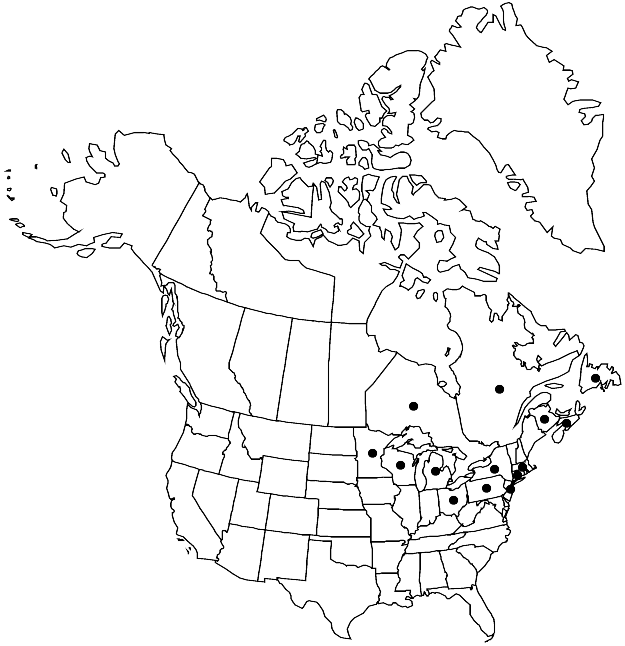Difference between revisions of "Plagiothecium latebricola"
in P. Bruch and W. P. Schimper, Bryol. Europ. 5: 184, plate 494. 1851.
FNA>Volume Importer |
FNA>Volume Importer |
(No difference)
| |
Revision as of 22:04, 16 December 2019
Plants in dense mats, light green to yellowish, glossy. Stems to 2 cm, 0.5–1 mm wide across leafy stem, prostrate to erect, ± complanate-foliate. Leaves erect-spreading, basally imbricate, ovate-lanceolate, symmetric, concave, 0.7–1.5 × 0.2–0.5 mm; margins plane or narrowly recurved nearly to apex, entire at apex or sometimes with few serrulations; apex acuminate, not abruptly contracted; costa ending just beyond leaf base, often ecostate; alar cells rectangular, 26–72 × 12–19 µm, in 1–5 vertical rows, terminating in 1 cell at base, region triangular; medial laminal cells 52–150 × 4–10 µm. Specialized asexual reproduction usually present as propagula, 57–108 × 7–14 µm, of 3–6 cells borne in leaf axils, or in clusters without stalks on abaxial leaf surface, or sometimes at leaf apices. Sexual condition dioicous, rarely fruiting. Seta light brown to orange-brown, 0.6–1 cm, straight. Capsule erect or rarely inclined, light brown to orange-brown when mature, straight or rarely somewhat arcuate, 0.5–1.2 × 0.2–0.6 mm, smooth, slightly wrinkled at neck when dry; operculum conic-apiculate to short-rostrate, 0.4–0.6 mm; endostome cilia absent, or 1 or 2, rudimentary. Spores 9–13 µm.
Phenology: Capsules mature summer.
Habitat: Swamps, fens, marshes, inundated woods on rotten logs, stumps, base of trees, humus
Elevation: low elevations (50-100 m)
Distribution

N.B., Nfld. and Labr. (Nfld.), N.S., Ont., Que., Conn., Mass., Mich., Minn., N.J., N.Y., Ohio, Pa., Wis., Europe.
Discussion
Plagiothecium latebricola is a rare species of northeastern North America, where it always occurs in wet habitats. The species is the smallest in the genus and is distinguished by short stems to 2 cm; erect-spreading, mostly symmetric, somewhat concave leaves 0.7–1.5 mm; medial laminal cells 4–10 µm wide; tapering decurrencies composed of rectangular cells; and erect, straight capsules that are not contracted below the mouth.
Selected References
None.